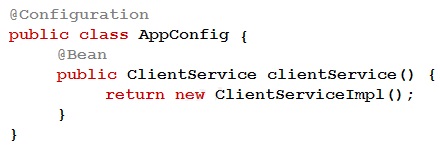VMware 2V0-72.22 - Professional Develop VMware Spring
Which two annotations indicate that the transaction for a transactional test method should be committed after the test method has completed? (Choose two.)
Refer to the exhibit.

Which option is a valid way to retrieve the account id? (Choose the best answer.)
Which two mechanisms of autowiring a dependency when multiple beans match the dependency's type are correct? (Choose two.)
Which two statements are true regarding storing user details in Spring Security? (Choose two.)
Which three types can be used as @Controller method arguments? (Choose three.)
Which statement about @TestPropertySource annotation is true? (Choose the best answer.)
Which two statements are true regarding bean creation? (Choose two.)
Refer to the exhibit.

What is the id/name of the declared bean in this Java configuration class? (Choose the best answer.)
If a class is annotated with @Component, what should be done to have Spring automatically detect the annotated class and load it as a bean? (Choose the best answer.)
Which two statements are correct regarding the @EnableAutoConfiguration annotation? (Choose two.)



